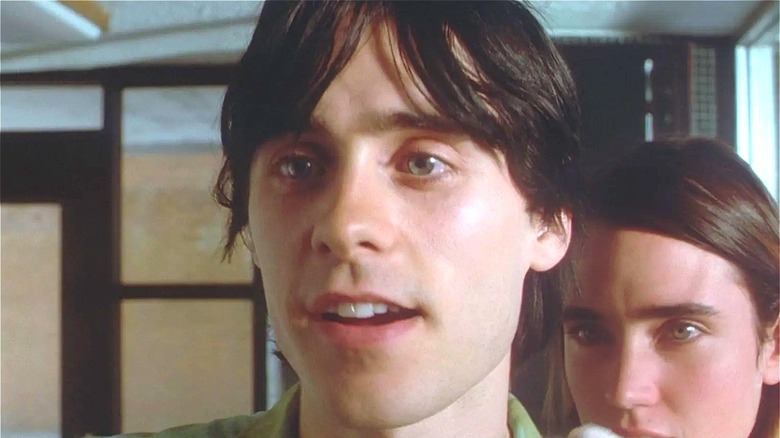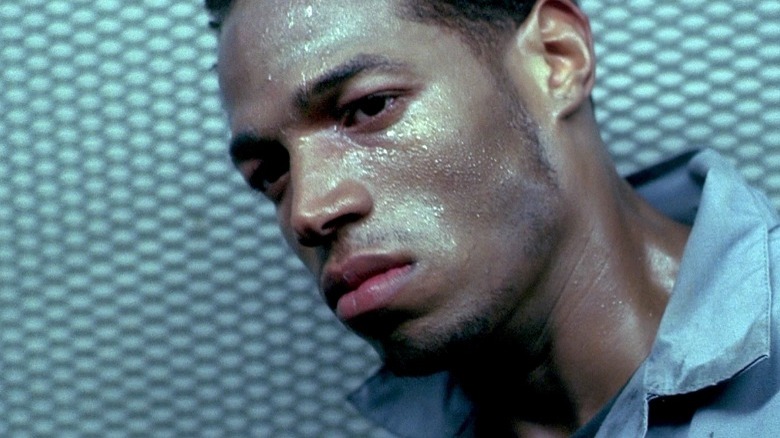The Requiem For A Dream Scene That Went Too Far
Darren Aronofsky is a director who has built an entire career out of laying it on as thick as possible. In each of his seven feature films, the American filmmaker has managed to keep coming up with ways to pummel new depths of angst, paranoia, formal intensity, and psychological affliction. But no other Aronofsky film goes quite as dark, quite as relentlessly, as "Requiem for a Dream."
The dorm-room-classic 2000 indie drama, which utilizes two parallel drug addiction stories as bedrocks for a sprawling reflection on human wants and needs, became the stuff of legend for the sheer nightmarish fervor of some of its scenes. As Harry (Jared Leto), Tyrone (Marlon Wayans), Marion (Jennifer Connelly), and Sara (Ellen Burstyn) get consumed whole and have their entire sense of reality eroded by substance dependence, they find themselves in situations too despairing and stomach-churning to even describe, culminating in a four-way climatic montage that overlays severe withdrawal symptoms, physical abuse, gangrene, sexual humiliation, forced labor, electroconvulsive therapy, flop sweat, amputation, catatonia, and household untidiness.
For the most part, it's all par for the course — Aronofsky intends to shock and rattle, and that's just what he accomplishes. But there's one particular tactic he utilizes to ramp up intensity that comes off as just cheap, if not outright insensitive.
Tyrone's fate is disturbing for different, more callous reasons
At the end of "Requiem for a Dream," all four protagonists are, essentially, in hell. Aronofsky designs the movie in such a way as to build to the darkest possible moment in each character's life, interweaving those moments frantically to achieve an indelible horror movie payoff. Sara is submitted to forced ECT and becomes numb. Marion is degraded by a den of sexual sociopaths. Harry and Tyrone are arrested and find themselves all alone in the world.
For Harry, the nightmare is compounded by the amputation of his gangrenous left arm. For Tyrone, meanwhile, hell is a lot less over-the-top. Facing withdrawal while being put through the grind of prison life is a depressing enough fate, but, to rise Tyrone's denouement to the surrounding level of hysteric horror, Aronofsky also has him be verbally and physically berated by racist prison guards, who call him a "dope fiend n*****" in between punches, and force him to "learn some manners."
While it is true that U.S. prisons are known for being horrifying, flagrantly racist environments, that sequence sticks out like a sore thumb. Most of "Requiem" wisely avoids realism and goes instead for emotional acuity. Sara's and Marion's scenes are not offensive, because their horror is nearly expressionistic. But in a film with little room for social commentary, the racism Tyrone experiences is ultimately reduced to another stop in the shock value train. It's a callous treatment for a subject that demands to be handled responsibly.

